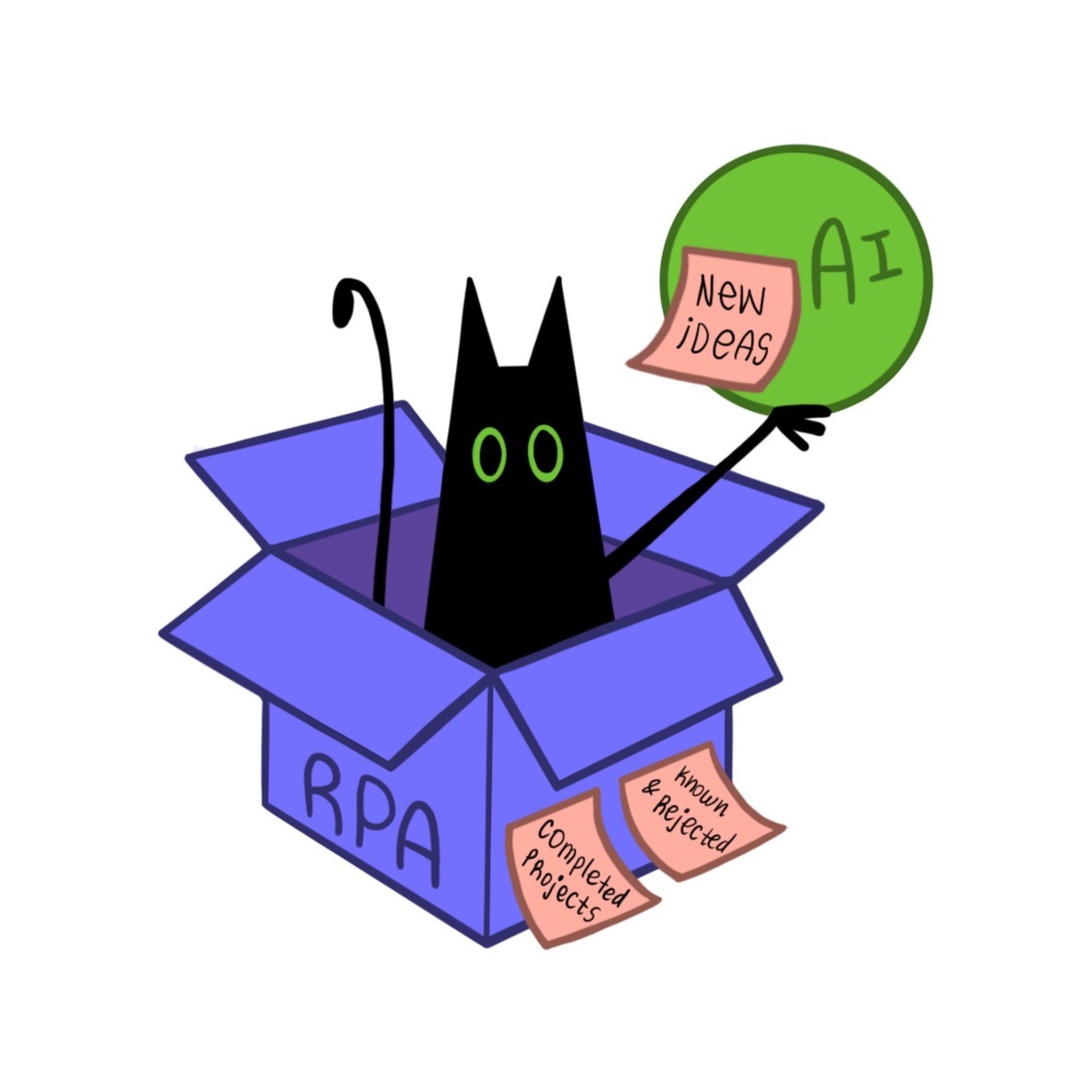5 Steps to Get Out of the [RPA] Box

As product managers, we often face the same challenge when new technologies emerge: how to make sense of what’s changing and what to do about it. In this article, I take a three-part view of AI in automation: first, a retrospective on where Robotic Process Automation (RPA) came from, then a look at what to do now with AI’s new possibilities, and finally, how to do it - the practical steps to identify, validate and bring AI use cases into the roadmap.
Product managers have always been explorers of possibility - balancing what customers need with what technology can deliver. However, with AI infiltrating every aspect of work, that balance has shifted. The challenge today isn’t just to find new use cases; it’s to redefine them. Look at familiar problems through a new lens of capability.
Not long ago, automation meant Robotic Process Automation (RPA). We streamlined predictable, rule-based work: invoice extraction, onboarding, data transfers and approvals. It worked beautifully where the process was straightforward, inputs were structured and exceptions were rare.
But there was always a boundary - a set of “known but rejected” ideas that didn’t fit the box. Tasks that required judgment, contextual understanding or creativity were left behind. They were too complex, costly or risky to automate.
Now “later” has arrived.
AI has redrawn that boundary. It doesn’t need perfectly structured inputs. It can interpret, summarize, classify and reason across various types of unstructured data, including text, images, documents and conversations. Suddenly, the automation backlog we once abandoned has become fertile ground again.

Completed Projects: Well-established RPA cases like invoice processing or onboarding.
Known but Rejected: Once infeasible due to cost or complexity, such as document classification or email triage.
New Ideas: Emerging opportunities uniquely enabled by AI - contextual insights, intelligent assistants or adaptive workflows.
The real opportunity sits in the middle. Those previously “too hard” problems are now within reach.
Here’s what that looks like in practice:
- Document Understanding: AI can extract meaning from complex files — interpreting tax forms, legal contracts or insurance claims.
- Submission Validation: It can verify client-submitted materials for completeness and compliance, not through rigid rules, but through semantic reasoning.
- Email and Chat Triage: It can group, summarize and prioritize communication by intent or urgency.
- Dynamic Workflows: It can route tasks, generate summaries or trigger actions based on context.
- Client Insights: It can synthesize data across projects or accounts to uncover risks or opportunities.
For product managers, this evolution brings both excitement and complexity. The new challenge is discovering where AI adds meaningful value and how to validate it responsibly. Consider Five Steps to get Out of [RPA] Box:
Revisit the “Rejected List
Review the automation ideas your team once explored. The ones labeled “too manual,” “too variable” or “requires judgment.” These are often the perfect AI candidates today.Frame Use Cases Around Outcomes
Instead of starting with “Let’s build AI classification,” define the goal: “Reduce review time by 50%” or “Increase submission accuracy.” Let the business outcome lead the technology.Prototype Fast, Validate Early
Unlike traditional RPA, AI behavior can’t be fully predicted until tested. Build small, simulate outputs and collect feedback before scaling.Design Feedback Loops into the Roadmap
AI is never done. Accuracy improves with data and usage. Roadmaps must include iteration, monitoring and fine-tuning as part of the product lifecycle.Balance Innovation with Trust
AI is powerful, but it must be transparent, explainable and compliant. A successful AI feature is one user can trust. “It just works” doesn’t work.
This is what modern product work looks like. Instead of asking “What can we automate?” think about what we can now make possible. RPA brought efficiency. AI brings intelligence. One is rule-based; the other is context-aware. Together, they redefine what’s possible in how we design products, support customers and scale operations.
The frontier for product managers isn’t about chasing every new AI trend; it’s time to return to the “no-go zones” of the past, asking why not now? And finding the courage to build differently.

Tatiana Nasedkina
Product Lead, ShareFile
Tatiana Nasedkina is a Product Lead at ShareFile, part of Progress Software, where she drives AI-powered automation and client collaboration solutions for accounting, legal, and professional services. With over a decade of experience across SaaS, AI innovation, and business operations, she focuses on turning complex workflows into intelligent, human-centered product experiences. Before joining ShareFile, Tatiana founded and led technology-driven businesses in agriculture and professional services, building expertise in product strategy, system design and cross-domain collaboration. Her work bridges entrepreneurship and enterprise product leadership, helping organizations scale through purposeful innovation. Tatiana writes about AI in product management, automation strategy and the evolution of human–machine collaboration.
Outside of work, she enjoys contemporary dance, creative writing and building digital tools that connect business strategy with real-world impact.
